The board game Calico is very deceptive. If someone draws you in with a theme like sewing a nice quilt to attract cats then you’d absolutely be forgiven for imagining a chilled out and gentle game.
However, it’s actually a really tricky tile-laying puzzle and exactly the kind of game that I love. The ruleset is very simple – a good teacher could get a game going in just a few minutes – but almost every decision feels meaningful and interesting. The “a minute to learn, a lifetime to master” is a bit of an overused cliche but I find it so applicable in so many situations, and definitely this one.
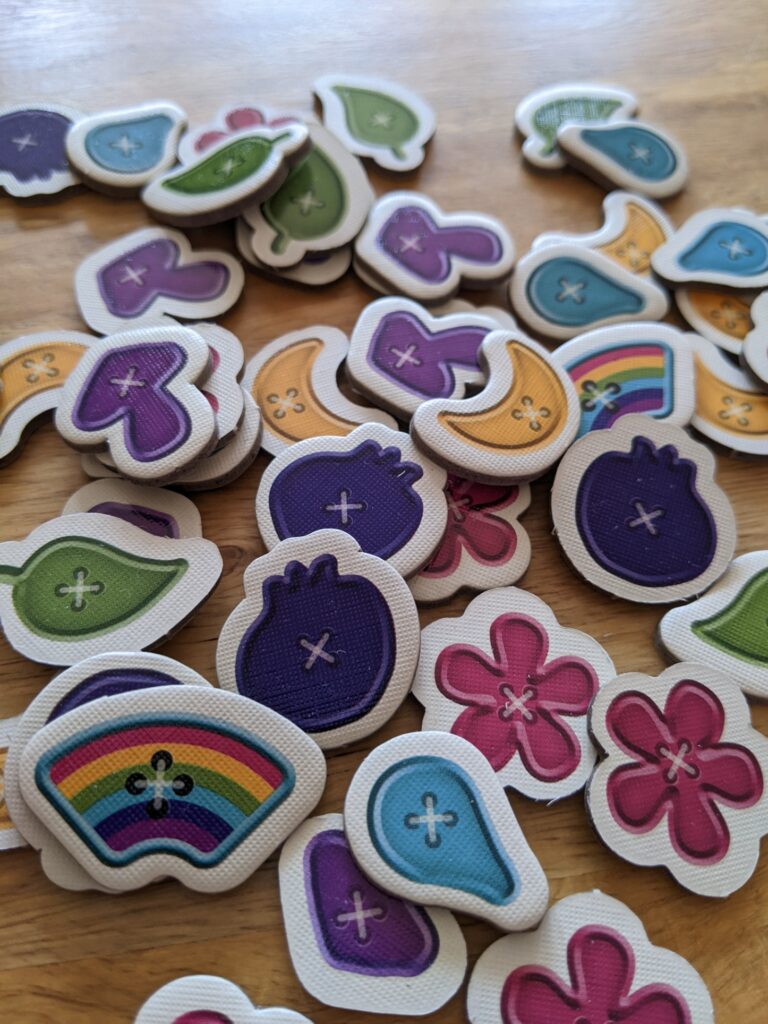
Personally, I really love abstract games, but when there is a theme, (even a loose one) it does need to be something engaging and enjoyable for me. For example, the game Ingenious is very abstract and has no theme at all, and that is fine by me. The Undaunted games are a good example of where the theme is very strong and in a way that doesn’t work for me – I strongly dislike military and war themes, doubly do if they are based on real-life. Calico, on the other hand, could be themeless like Ingenious, or it could be themed around the military or something else, but instead, it’s themed around quilts and cats. It’s soothing even if the gameplay is challenging and I believe that is really important. Crunchy difficult deeply thinky games don’t have to be themed in a traditional way to do well and have a wide appeal. It feels like a step forward for the board game industry.
Don’t get me wrong, I know it isn’t groundbreaking, but it’s so accessible. It’s fairly compact, it’s easy to teach and to learn, there are a few different things you can focus on doing, which is great as a new player, and one of those things is “laying tiles in such a way as to attract these adorable cats that are also worth a bunch of points”. Even if I didn’t love the game myself, I would still be glad it exists.
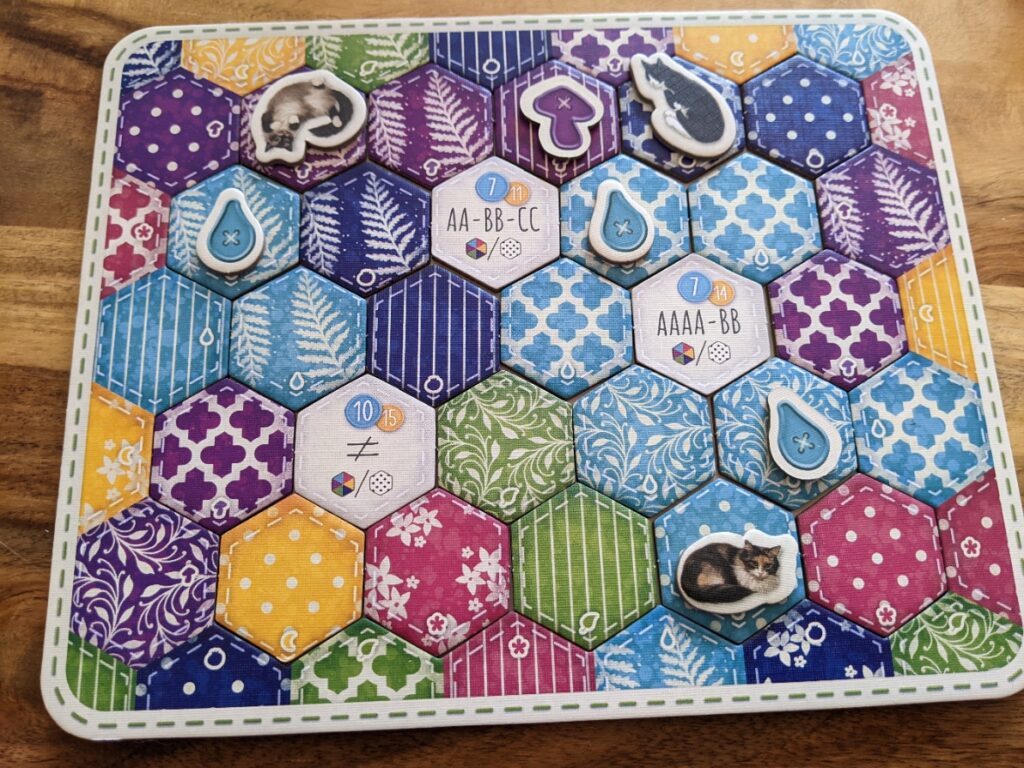
It’s also a very pretty game. Cats, patterns, cute little buttons, and bright colours all just add up to tick a lot of boxes for me. Happily, the tiles also include a symbol to denote colour so it’s more accessible, and the symbols match up to the shape of the buttons you get, so it’s easy to keep track of what’s available. Beth Sobel has already gained fame as the illustrator for Wingspan, and she holds her own reputation up here too.
One of my favourite things about the gameplay and mechanics of Calico is something I touched on above and is really important to me as a game mechanic generally, and that’s the ability to have multiple options and to be able to pick something to focus on. Calico has this in spades. There are three different cats you can try and attract, each using two different patterns. Any cat on your board is worth points at the end of the game so if you decide to ignore the other goals and just make the most cat-friendly quilt, you’ll still do okay. Even the personal goals on your player boards can be achieved in multiple ways, matching either patterns or colours, or both for a real challenge. I love it when games let you set your own baseline. If the game forced you to match both colour and pattern every time, it would feel much too hard, unfair, and unapproachable.
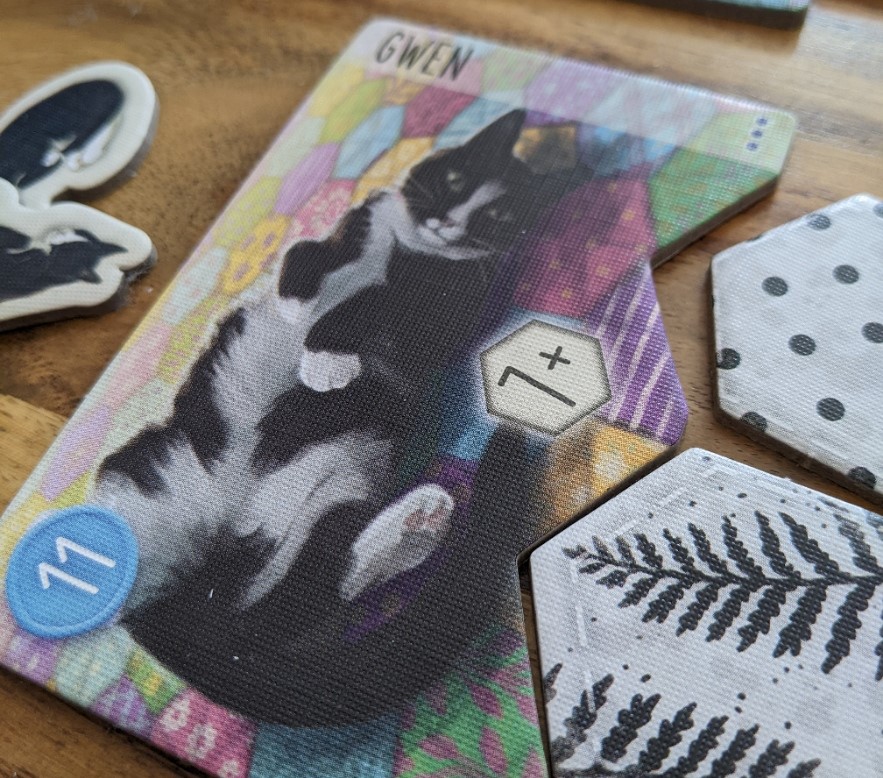
I’ve been trying to work out what it is about these simple-ruleset/formidable gameplay games that I like so much, and the main thing I can come up with is that no matter how well or badly I do, it will never be because of a rules mistake. I might have to try and hold a lot of different bits of information in my head, but I’ll never misinterpret some card and end up with fewer resources than what I was counting on. Whether I do well in a game of Calico or badly, it feels like that will always be because of the choices I made with the tiles that were available.
If you want a game with a high degree of interactivity, I will say now that Calico is not it. The most you do is draft from the same “market” of tiles, but in the five or so games I’ve played it’s never worth it to “hate draft” because you always have to place the tiles you take, and each tile is so impactful. You’ll only get to place 22 tiles through the game to maximise your score and reach your goals.
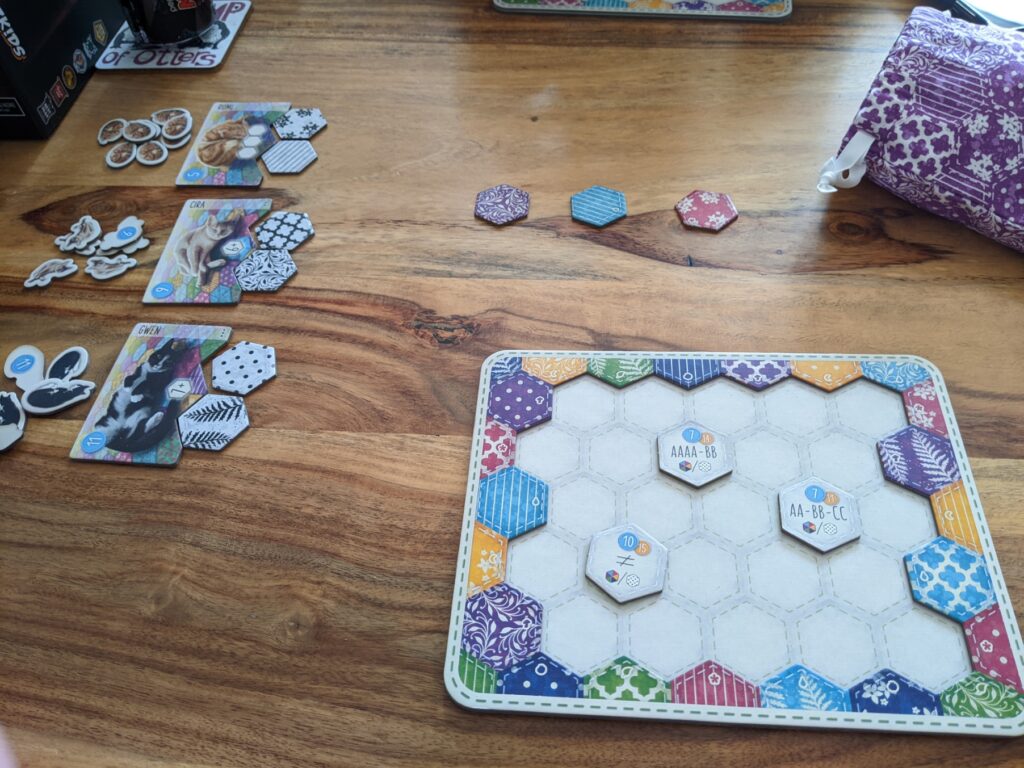
A minor thing that nonetheless I love is the dual meaning of the word “calico” – it means both “cotton fabrics with patterns” (in North America – here in the UK it actually refers to plain fabric, go figure), and a cat with a tri-colour coat. I love a bit of wordplay.
Calico also has a solo player mode, and it doesn’t require some awkward automata or “dummy player” – it plays very like the regular game and the rulebook comes with suggestions for a solo campaign which I intend to explore at some point.
One thing I can say for certain is that like a cat doing pretty much anything, I feel this game is best enjoyed whilst luxuriating in the sun.

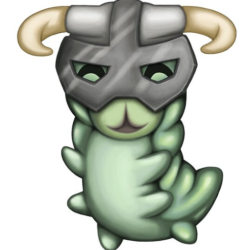
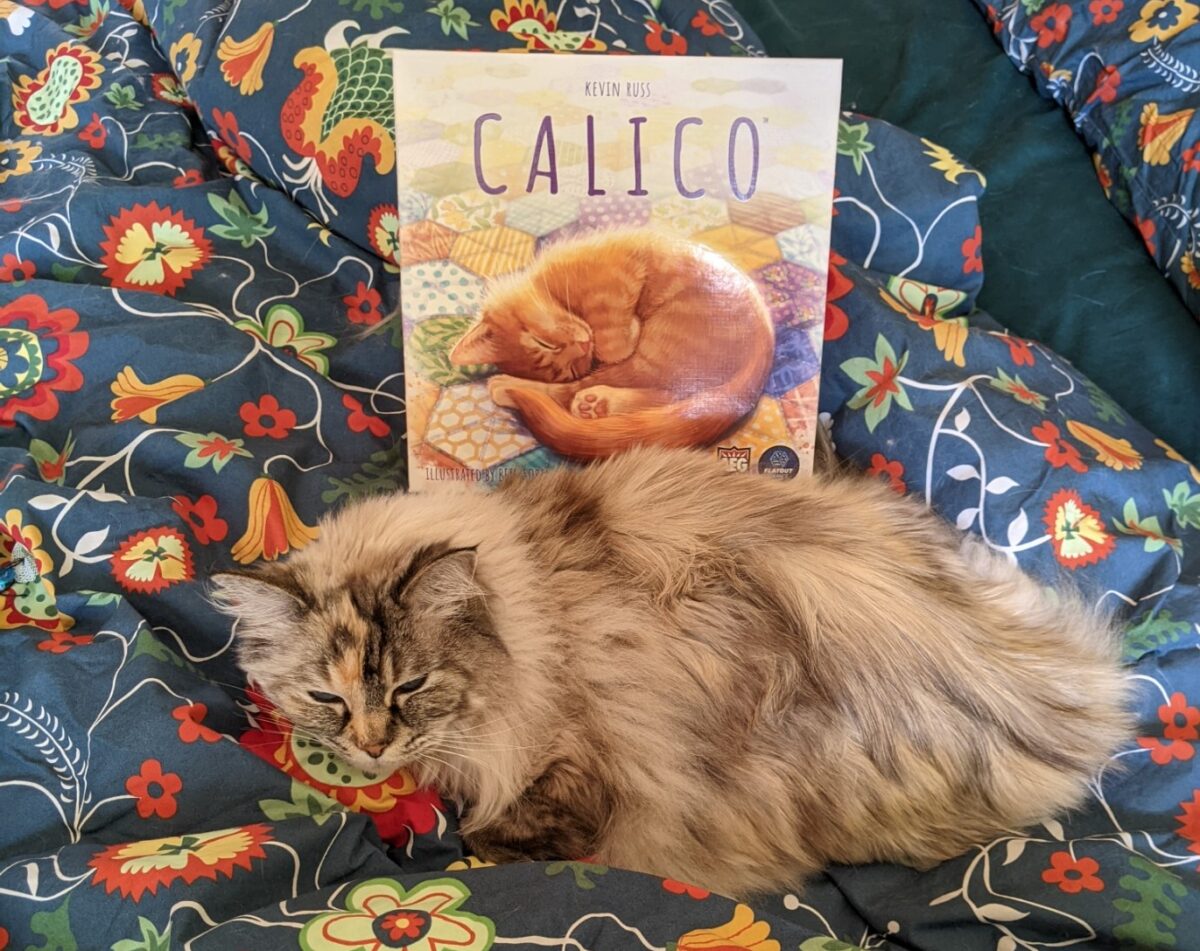
6 replies on “Calico Board Game Review”
Calico is lovely, super cute and a fun brain boxer when trying to plan all the patterns. Love the review, nails it I think x
Thank you <3
I want to play Calico again now!
Me too! Maybe a wee online session is called for.
How similar is this to Patchwork? It’s the obvious comparison, but everything you mentioned feels familiar (from my one or two times playing it)
And is it quick to play? I think one of the things I really like about these sort of complex-but-approachable games is that they don’t overstay their welcome. Perfect for waiting for other people to show up on a board game evening, or just to while away 10 minutes or so.
It’s not very similar to Patchwork but isn’t completely different. You’re still playing a tile drafting game but there’s no spacial/shape element to it at all. I think there’s actually a lot more to think about and find Calico a “harder” or at least “more thinky” game. It can also go up to four players so different in that way, too.
We own both Patchwork and Calico and think they are different enough that it isn’t redundant.
It takes about forty minutes as a two player game, at a guess. Pretty quick but not the short snappy 10 minutes you mentioned. However this is presumably different with more players – I played it with four once and don’t remember the length but it has never felt like it dragged. There’s definitely room for someone to get struck hard by analysis paralysis and increase the duration though. As with many things, it’s a fantastic short – medium length game but would be a tedious long game.